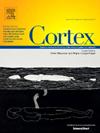Shared body representation constraints in human and non-human primates behavior
IF 3.2
2区 心理学
Q1 BEHAVIORAL SCIENCES
引用次数: 0
Abstract
Previous studies indicated that the sense of body ownership (i.e., the feeling that our body parts belong to us; SBO) can be experimentally modulated in humans. Here, we focused on SBO from an across-species perspective, by investigating whether similar bottom-up and top-down constraints that consent to build SBO in humans also operate to build it in monkeys. To this aim, one monkey and a cohort of humans (N = 20) performed a paradigm combining the well-known rubber hand illusion (RHI), able to induce a fake hand embodiment, and a hand-identification reaching task, borrowed from the clinical evaluation of patients with SBO disorders. This task consisted of reaching one’s own hand with the other, while presenting a fake hand in different conditions controlling for bottom-up (synchronicity of the visuo-tactile stimulation) and top-down (congruency of the fake hand position relative to the monkey’s body) SBO constraints. Spatiotemporal kinematic features of such self-directed movements were measured. Our results show that, when the monkey aimed at the own hand, the trajectory of self-directed movements was attracted by the position of the hand believed to be one’s own (i.e., the fake hand), as in humans. Interestingly, such an effect was present only when both bottom-up and top-down constraints were met. Moreover, in the monkey, besides displacement of movement trajectory, also other kinematic parameters (velocity peak, deceleration phase) showed sensitivity to the embodiment effect. Overall, if replicated in a larger sample of monkeys, these results should support the view that human and non-human primates share similar body representation constraints and that they are able to modulate the motor behavior in both species.
人类和非人类灵长类动物行为中共同的身体表征约束。
以前的研究表明,人类的身体所有权感(即感觉身体部分属于自己;SBO)可以通过实验进行调节。在这里,我们从跨物种的角度关注SBO,研究在人类身上同意建立SBO的类似自下而上和自上而下的限制因素是否也在猴子身上起作用。为此,一只猴子和一组人类(N = 20)共同完成了一个范例,该范例结合了著名的橡胶手幻觉(RHI)和手部识别任务,前者能够诱发假手的出现,后者则借鉴了对SBO障碍患者的临床评估。这项任务包括用另一只手去够自己的手,同时在不同条件下呈现一只假手,以控制自下而上(视觉触觉刺激的同步性)和自上而下(假手相对于猴子身体位置的一致性)的SBO约束。我们测量了这种自我定向运动的时空运动学特征。我们的结果表明,当猴子瞄准自己的手时,自我定向运动的轨迹会受到被认为是自己的手(即假手)位置的吸引,这一点与人类相同。有趣的是,只有同时满足自下而上和自上而下的限制条件时,这种效应才会出现。此外,在猴子身上,除了运动轨迹的位移外,其他运动参数(速度峰值、减速阶段)也显示出对化身效应的敏感性。总之,如果在更大的猴子样本中得到重复,这些结果将支持这样一种观点,即人类和非人灵长类动物有着相似的身体表征约束,它们能够调节两种动物的运动行为。
本文章由计算机程序翻译,如有差异,请以英文原文为准。
求助全文
约1分钟内获得全文
求助全文
来源期刊

Cortex
医学-行为科学
CiteScore
7.00
自引率
5.60%
发文量
250
审稿时长
74 days
期刊介绍:
CORTEX is an international journal devoted to the study of cognition and of the relationship between the nervous system and mental processes, particularly as these are reflected in the behaviour of patients with acquired brain lesions, normal volunteers, children with typical and atypical development, and in the activation of brain regions and systems as recorded by functional neuroimaging techniques. It was founded in 1964 by Ennio De Renzi.
 求助内容:
求助内容: 应助结果提醒方式:
应助结果提醒方式:


